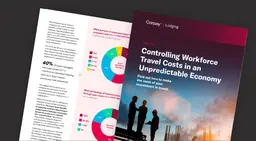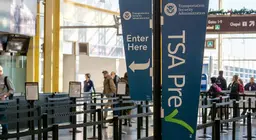When the Grid Goes Down: Keeping Crews Safe in a High Heat Emergency

It’s summer time in North America, which means no school, pool parties, and fireflies. It also means soaring temperatures and rising humidity. While much of the country’s infrastructure holds up fine under the season’s typical extremes, long periods of high heat can create unique problems.
From transportation infrastructure to utilities, high heat is a threat. During a heat wave, pavement and railway tracks can buckle, kink, or deteriorate. Electricity usage spikes and stays high as air conditioners and other cooling systems work harder than normal to cool warming environments. At the same time, high heat reduces electric lines’ transmission capacity and can cause transformers to overload, which further strains an already strained electric grid.
When the inevitable happens during a heat wave — a failed grid, a kinked rail line — experienced and dedicated crews move in to repair critical infrastructure. Of course, the same high heat wreaking havoc on critical infrastructure also threatens them. Maximizing crew health and safety in a heat wave, however, is both possible and essential. Here are some recommendations for keeping crews safe in a high heat emergency.
Minimize Exposure to Sun and Heat
Working overnight and during the coolest parts of the day — early morning to early afternoon — can provide meaningful protection for emergency crews who have to work outside. Since that’s not always an option, however, it’s important to get creative when high heat and humidity are just part of the job site. Here are some tips for reducing exposure and the effects of sun and heat when being outside during the heat of the day is necessary:
Wear sunscreen. While it might just be parts of arms, hands, face, and neck that are exposed to the sun, in high heat emergencies, a sunburn is more serious than at other times. Why? It reduces the body’s ability to cool itself.
Take breaks in the shade. Trees, crew-built and -provided shade structures, inside the cab of a truck with the windows down — getting out of the sun can help cool body temperature down and protect against heat exhaustion or stroke.
Move slower. Exertion at a high temperature and in high humidity is much more taxing on the body than during less extreme weather. While the pressure to get work finished as fast as possible will always be there in a high heat emergency, being mindful of — and respecting — the weather’s toll on workers will make sure the job gets done without a medical emergency.
Wear proper clothing. UV-resistant clothing that’s lightweight, a light color, and loose fitting can help workers better regulate their body temperatures and cool off.
Get plenty of rest when not working. During high heat, it's not uncommon for infrastructure to fail at multiple points and for restoration to take time. Ensure your crew has the lodging they need — close by, safe, affordable. Not sure where to start? This on-demand webinar answers questions about how Corpay Lodging can find solutions fast for disaster response and emergency utility crews.
Stay Hydrated and Eat Light
Staying hydrated in high heat and humidity is essential, but how a crew stays hydrated matters, too. Caffeinated drinks can actually lead to valuable water and electrolyte loss and should be avoided. Workers should instead drink plenty of water and sport-type drinks — just be sure to skip the ones with caffeine or stimulants as these put extra stress on already stressed out bodies.
Caloric intake and nutrition is also important in a high heat emergency, but eating light and cooling foods should be prioritized. Workers should bring a cooler to keep food cool and prioritize eating fruit, salads, smoothies, and sandwiches with cold, crunchy veggies on them. Heavier foods can be hard for the body to digest in high heat and, if possible, should be avoided. Of course, the main thing is fueling the body as it works. So above all, crews still need to eat — something that can be hard to remember as heat can lower appetites and the pressure of getting a line or substation up and running again can reduce willingness to take breaks.
Know the Signs of Heat Stress and Illness
For crews responding to infrastructure needs in a high heat emergency, the trappings of the job mean an increased risk of heat stress and illness. Heavy PPE, outdoor exposure, remote environments, physically demanding work (e.g. digging, lifting, etc.), and high pressure make it even more necessary for crews to know and respect their limits — before they’ve reached them. Every person on a crew that’s responding to a high heat-caused infrastructure failure emergency needs to be familiar with the signs of heat stress, exhaustion and heat stroke. These signs include:
Excessive sweating
Dizziness
Mental confusion
Muscle cramps
Headache
Nausea
Rapid heart rate
Fainting
High body temperature
It’s important to note that the transition from heat exhaustion to heat stroke typically involves a dramatic change in skin appearance (cool, pale, and clammy during heat exhaustion to red, hot, and dry during heat stroke) and a dramatic change in pulse (fast and weak during heat exhaustion to fast and strong during heat stroke). Both are dangerous conditions. While heat exhaustion might be able to be managed on site, heat stroke always requires immediate medical attention.
For emergency crews, working in high heat and humid conditions is sometimes just part of the job. Staying safe in those conditions, however, should be everyone’s priority — from management to crew. Follow these tips the next time high heat comes calling.
When every minute counts, we’ve got lodging covered for emergency crews.
With deep hotel partner relationships, Corpay Lodging finds rooms fast—even in hard-to-source areas—so your crews can focus on restoring power, not booking hotels. Get emergency lodging support that moves as fast as you do.
Categories
Contents
Popular Articles
Related Articles
800K+ companies trust Corpay
The travel partner that lets you choose the way your company manages travel. Your business. Your rules.
$3.5 Billion
Corpay Hotel Purchasing Power
20.3 Million
Annual Room Nights Stayed
48 years
As America's Workforce Lodging Leader
$540 Million
Corpay Lodging Annual Member Savings
No minimum usage fees.
No monthly fees.
No gotchas.
Join For FreeLast minute booking
Book online, with our app, or simply walk-in!
Flexible reservations
Easily manage reservations - without a monthly fee.
Best Price Guarantee*
If you find a lower price online, we’ll match it.
24/7 traveler support
Reservation and check-in support, around the clock.
*Terms and conditions apply. Read more about our Best Price Guarantee.
© 2025 Corpay, Inc. • All Rights Reserved • Privacy Policy • Site Map • CheckINN Card Terms & Conditions • Terms of Use •



